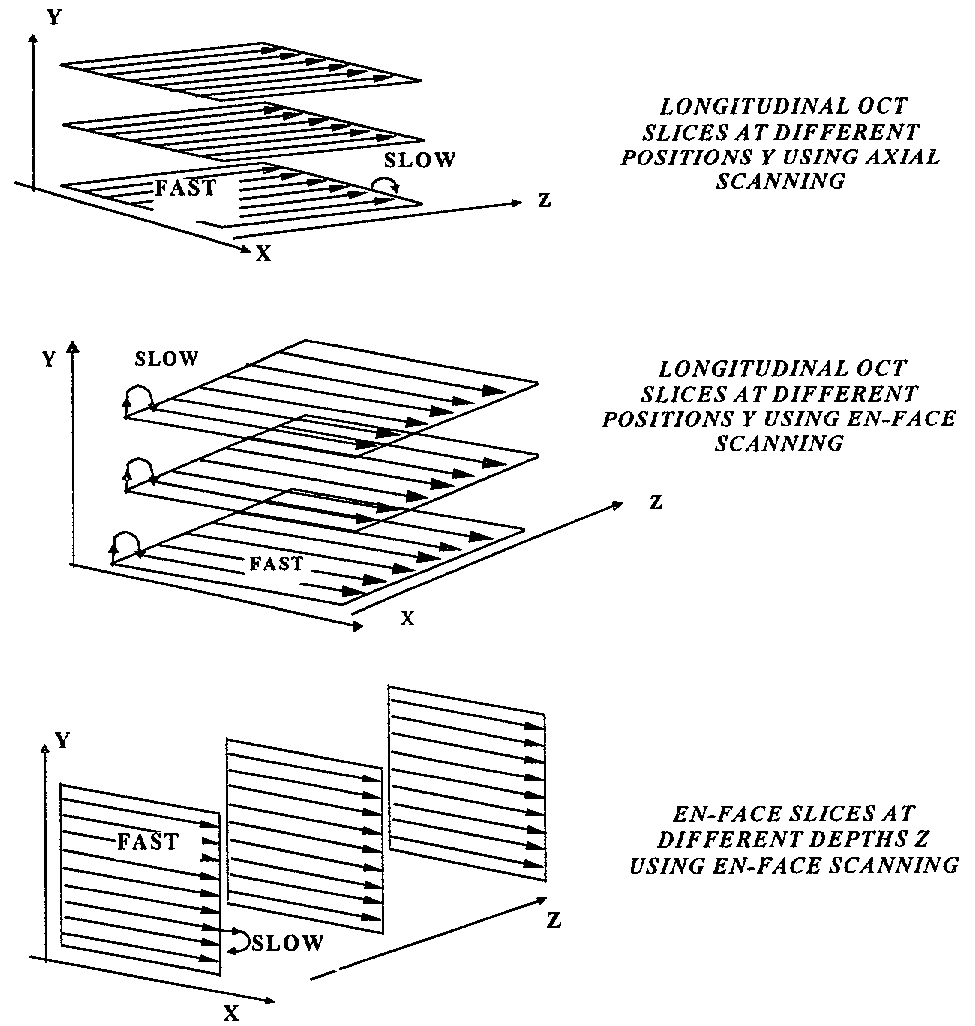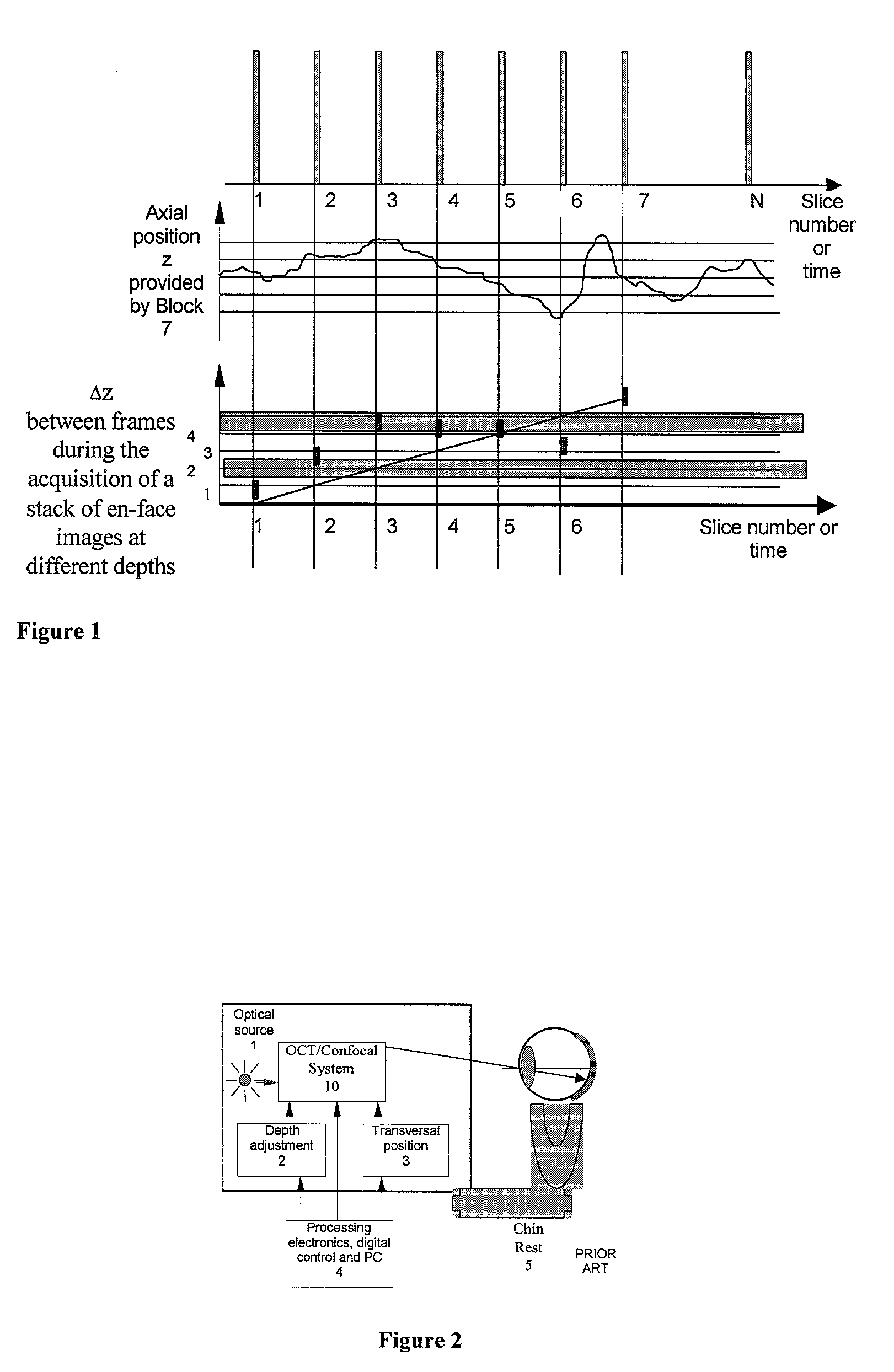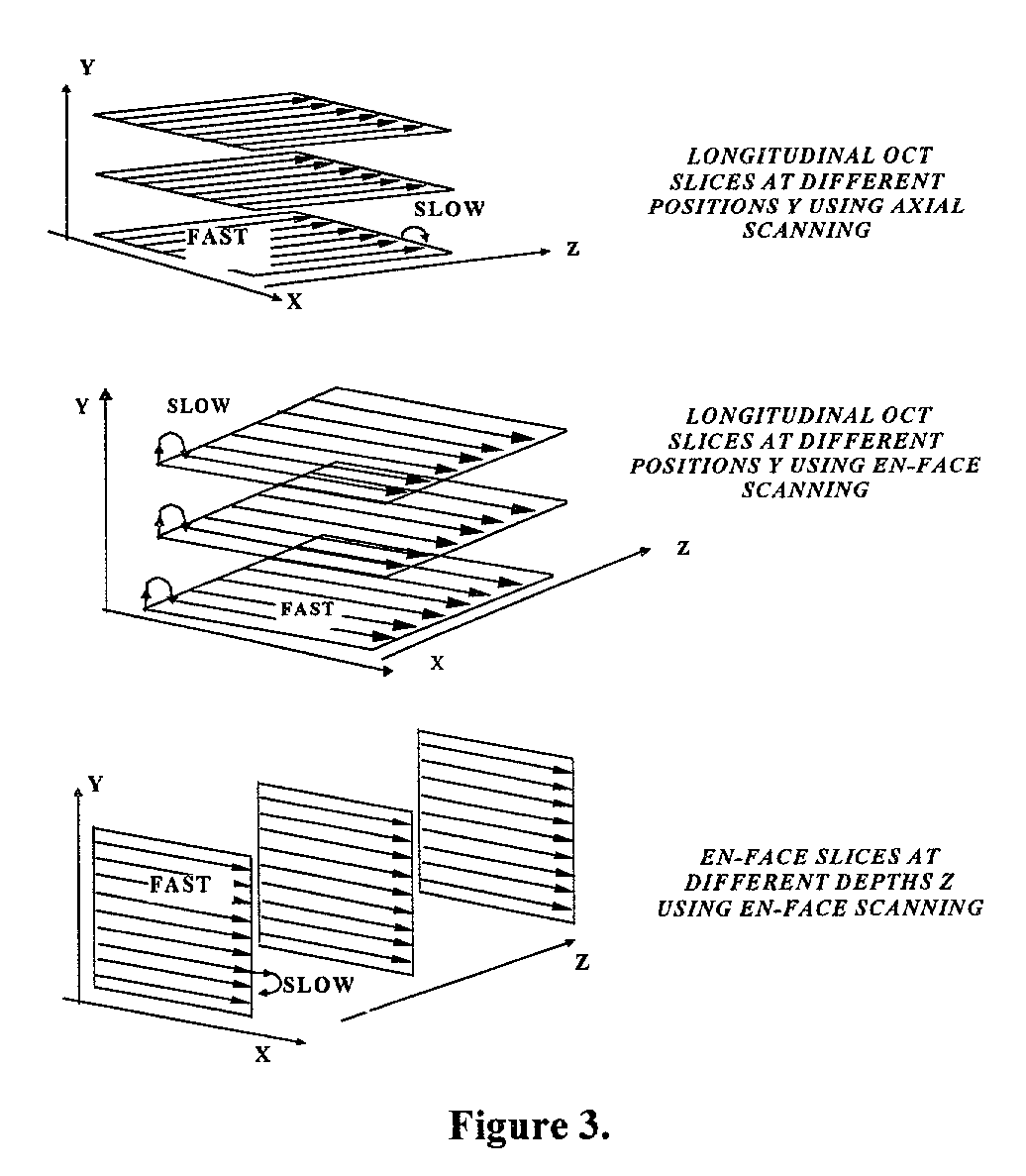Apparatus for high resolution imaging of moving organs
a tomographic apparatus and high-resolution technology, applied in the field of optical coherence tomographic apparatus, can solve the problems of oct transversal images showing only fragments of the retina, difficult to interpret, and loss of absolute depth of individual images in the stack, and achieving a proportionately lower strength of oct signals
- Summary
- Abstract
- Description
- Claims
- Application Information
AI Technical Summary
Benefits of technology
Problems solved by technology
Method used
Image
Examples
first embodiment
[0121]FIG. 4a shows, in diagrammatic form, an (ophthalmic) apparatus 100 in accordance with the present invention. As shown in FIGS. 4a and 4b, the apparatus 100 comprises in addition to the elements in FIG. 2, a splitting element, 6, which allows the common axis of the light to the eye to be shared by the OCT or the OCT / confocal system, 10, and the axial position sensing block, 7a. The axial position of the organ (cornea in the case of the eye) is read by the block 7 and fed into the processing electronics and digital control system, 4. The apparatus according to the invention is also equipped with processing procedures to acquire stacks of images stored in the memory of the control system, 4. A block for error indication 8, informs the user using visual and audio stimuli about the state of the system while acquiring slices under the control of the block 4.
[0122]FIG. 4b is similar to FIG. 4a, except that it also shows a second transverse position sensing device 7b. In this case, th...
second embodiment
[0153]FIGS. 11a,b,c show the splitting element where the OCT beam and the beam of the sensing block of the axial—and eventually of the transverse—position 7a and 7b, respectively, share a beam-splitter, 6. If the sensing block of the axial position, 7a, uses optical waves of similar wavelength with that of OCT, then the beam-splitter ratio is chosen as such as the transmission of the OCT signal (when working in transmission) or the reflection of the OCT signal (when working in reflection) to be as high as possible. The beam-splitter 6 can be a cold mirror, a hot mirror, or and edge filter, which is used to transmit wavelengths from one band and reflect wavelengths from a different band. When the beam-splitter 6 is a cold mirror, this may be used for instance to transmit wavelengths larger than 1000 nm, a band used by the OCT / confocal imaging system, 10, and reflects wavelengths smaller than 1000 nm, in a band used by the sensing blocks 7a and 7b. This case is illustrated in FIG. 11a...
PUM
 Login to View More
Login to View More Abstract
Description
Claims
Application Information
 Login to View More
Login to View More - R&D
- Intellectual Property
- Life Sciences
- Materials
- Tech Scout
- Unparalleled Data Quality
- Higher Quality Content
- 60% Fewer Hallucinations
Browse by: Latest US Patents, China's latest patents, Technical Efficacy Thesaurus, Application Domain, Technology Topic, Popular Technical Reports.
© 2025 PatSnap. All rights reserved.Legal|Privacy policy|Modern Slavery Act Transparency Statement|Sitemap|About US| Contact US: help@patsnap.com



